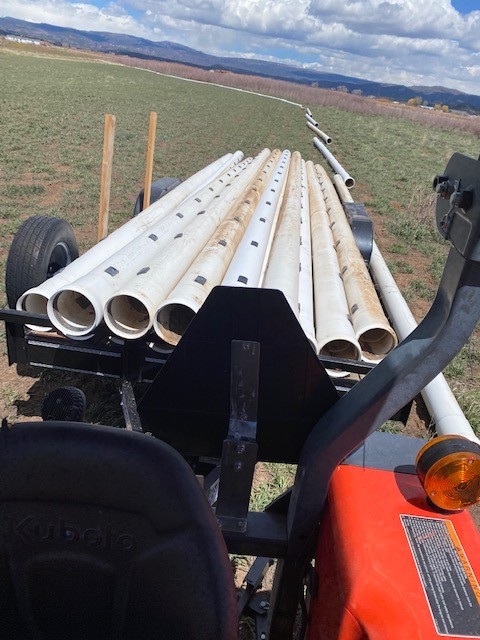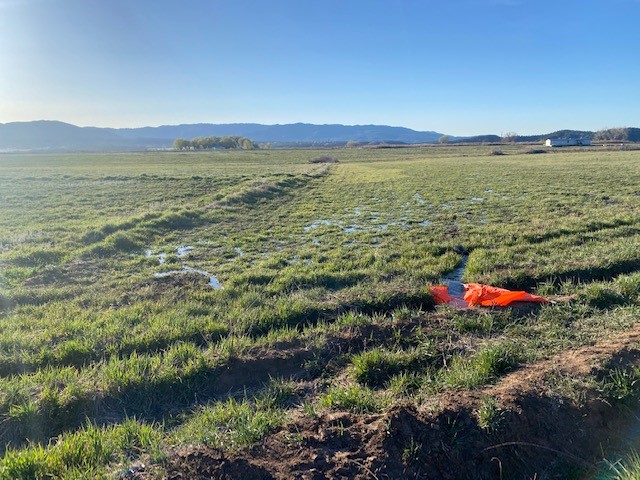This article is a follow up to the tribal member agricultural assignment meeting which was held April 12. Tribal members gathered to discuss issues that we would like to tackle during the current 2022 growing season. Though this meeting was open to anyone who is growing any type of agricultural crop on a tribal assignment or allotment, most members seem to be hay farmers.
We are still open to other types of growers and to buyers who may need to be connected to any type of farmers in the area. For the purpose of this article, our findings will primarily cover hay production and buying. We did have members inquire about filling out a questionnaire even though they were not able to attend the meeting and they were invited to do so.
Some of the major highlights of information/programs requested are listed below.
Agricultural Loans
Access to funding seems to be one of the biggest challenges to new farmers who are just starting out. Seed prices are high and fertilizer prices have almost tripled in just the past year. O&M (water) bills for the year are sent out at the beginning of the year and are expected to be paid regardless of whether a person uses their allotted amount of water or not. Tractor services provided by the Tribe are charged on an hourly basis and so ground prep, seeding, and fertilizer distribution can add up, depending on the number of hours needed to get an assignment up to standards. All these expenses are incurred before the water even turns on. What further complicates the ability to get money for this is the notion that none of these services provide collateral.
If you buy a tractor, an implement, or tangible asset, then at least the item can be used as collateral in a standard bank loan. Many farm processes and incurred costs are done upfront with the hope of generating revenue later in the year. This makes it very difficult for a lending company to confidently loan money to a farmer. Still, if we are going to encourage our membership to farm, then we need to provide them the means of getting the necessary funding. One such option could be providing agricultural loans through our Tribal Credit Dept. The questionnaire asked, “How much would you think would be needed for an impactful agricultural loan?” The results varied and some people even asked for help to create a number based upon an evaluation of their own property and needs.
Training vs. Buying Services
“Give a person a fish and feed them for a day. Teach a person to fish and you feed them for a lifetime.”
One theme that comes up multiple times in the questionnaire is people wanting to know how to do things. The idea of the meeting was to couple new farmers with knowledgeable and wise farmers who have already made the mistakes that we are hoping to avoid. Nothing is more frustrating than buying a $10,000 hay rake and then breaking it within the same year because of not knowing at which speed/gear to rake or how high to have the rake off the ground. Wednesday, May 25, the Ag Division is hosting a Weed Control class over on their campus. This is one of the many issues brought up and will only help the membership become more confident farmers. Other things brought up were ditch burning, fence building/repair, tractor driving, selecting the right tractor/implements, and irrigating best practices.
Some assets needed to farm are very expensive to buy and one will need multiple years of growing and selling to afford things such as a combine, baler, or hay stacker. Paying custom farms for these services may make sense in the short term and it also eliminates the cost of maintenance and repairs. I think that many of us are looking forward to the day that we can farm independently with our own equipment and can buy, operate, and maintain our own assets.
Access to Equipment
There have been a few different ideas floated around about how to best handle the idea of having access to the many different implements needed to prepare the ground and harvest the crop. Even with an agricultural loan, the everyday farmer needs to be strategic in which pieces of equipment he/she selects to start with. Accumulating additional equipment will take years and a person needs to analyze which parts of farming can be done by themselves and which parts require hiring someone.
The training classes that Ag Division is rolling out should give us confidence in operating implements and inspire us to purchase the right implement for our own farms. Other than having Ag loans, the other unanimous idea that the attendees were in favor of is to have a relationship with local agricultural stores where they might table for our meetings or to have some type of event where we might buy assets at a reduced price.
Used equipment is also a great way to start out. We need to know who is looking for what type of equipment. I am also looking at ways that we might participate in future farm auctions in the area. Another idea is to look into the feasibility of having the Ag Division upgrade their equipment and give the membership the opportunity to buy/use their current inventory.
On-Site Consulting
I think it’s safe to say that if you have asked for any services from Ag Division, then you have probably had Ag Field Supervisor, Micco Wesley or Ag Division Head, Kevin Mallow on your property at some point. This small detail brings great comfort that you are truly getting a “custom farm” experience. The hope of future meetings and training programs is to continue with working with farmers and ranchers on their own respective property. The questionnaire asked, “Would you be interested in on-site training so that we can tailor the learning to your specific property?” The response to this by most people was an overwhelming YES. Learning in a classroom is one thing. Being on-site at someone’s property gives a whole new perspective. It lets people offer suggestions and in real time and it give a sense of familiarity to others who may have similar issues at their house. Tribal members agree that having training and advice given on their own property is something that should be encouraged.
Now that the water is on, most of us are spending the early mornings in the field watching the sun come up. Our reward for a good day’s work at our job is to return to change that same water later that evening. This will be our schedule for the next few months. We can hope to break away for a little personal time maybe on Saturday or Sunday afternoons. The weekdays do not belong to us. They belong to the responsibility that we have in the job that we are very proud doing.




